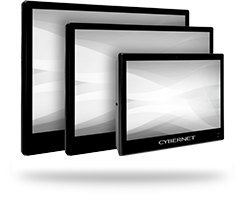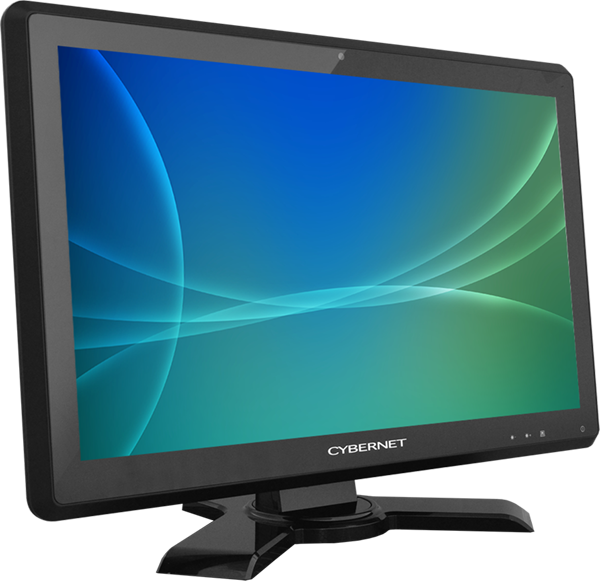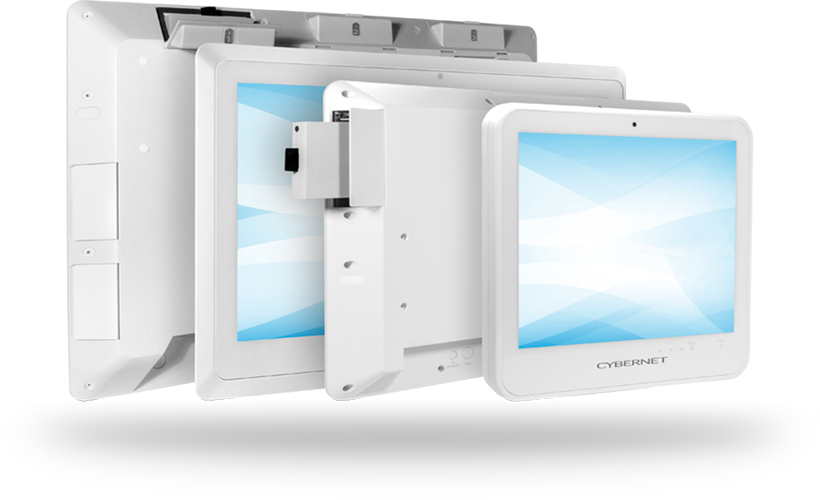When shopping for a new PC, you'll find an overwhelming range of options to choose from. Whether you need a new industrial PC or business computer, however, there are two main categories to consider before getting deeper into your search: all-in-one vs. desktop PCs.
Advantages and Disadvantages of All-in-One PCs
An all-in-one PC (AIO) is precisely what the name implies: it combines all the necessary components of a computer, such as the motherboard, CPU, storage, and monitor, into a single device. Only the most basic peripherals, such as a mouse and keyboard, need to be attached to an AIO for full functionality. Depending on the use case, even those might be unnecessary. Modern AIOs are built with highly accurate touchscreens, letting users input commands with a simple tap of their fingers.
Advantages
The first and most obvious benefit of all-in-one PCs is their smaller footprint. Because an AIO combines both computer and monitor into one device, it occupies significantly less space than a desktop PC. This means that AIOs can be used in work environments that cannot support a desktop PC, such as cramped industrial settings.
Combining a computer, monitor, and user interface into one device also means far fewer cables to manage, such as those connecting the monitor and peripheral devices to the computer. This makes the AIO far easier to transport and move around, which is crucial for specific use cases, such as all-in-one medical PCs used in conjunction with workstations on wheels. Fewer cables mean fewer chances that the cart will get snagged on something as healthcare providers move from patient to patient during a shift.
Another significant advantage of AIOs is that they are easier to set up and deploy en masse. AIOs require fewer peripheral devices for support, which means less time spent purchasing said peripheral devices to go with new computers. This feature is particularly useful for any IT team that must deploy and manage a large fleet of devices, such as in a hospital or factory.
The final key factor for AIO PCs is their reliability. By placing all necessary components in a single device whose design is tested and verified, AIOs are far less likely to encounter compatibility issues between the different elements of the computer. AIOs also often feature reliability-enhancing features such as fanless cooling and IP65-rated front bezels that lock out dust and liquids from entering the casing and damaging the electronics inside. Industrial panel PCs are designed and manufactured to extremely high standards, such as IEC 60068, which help guarantee their reliability even in harsh work environments.
Disadvantages
While AIO PCs are undeniably useful in a wide range of situations, there are a few drawbacks to consider before committing to them. First of all, AIO PCs are a much more “complete” purchase than a desktop PC, and typically have far fewer customization options available. While this is convenient for most buyers, as it removes much of the decision-making process, some will want a greater variety in choice when it comes to screen size, processors, or memory.
Additionally, the smaller size of AIOs can limit the physical hardware included inside the PC itself. For example, larger graphics cards are essential for gaming, high-end video editing, and similar applications, but cannot physically fit inside an AIO. For this reason, gaming and other graphically-intensive applications rarely rely on AIOs.
Advantages and Disadvantages of Desktop PCs
The more common computer solution is the desktop PC. A desktop PC consists of a separate computer (also called a tower), monitor, and input devices (the mouse and keyboard). Desktop PCs are the typical choice for both personal entertainment and office work, thanks to their ease of customization.
Advantages
Desktop computers are often chosen thanks to how easy it is to tweak and customize their design or performance. A desktop PC can be built out of countless configurations of different motherboards, CPUs, memory, and other components, so long as the connections match and the components physically fit inside the case. Having a separate monitor also makes it easier for shoppers to get the screen resolution they want, provided the PC’s graphics card can support it.
This modular design approach, combined with the larger interior spaces of desktop PCs, makes them easier to repair and modify than AIOs. An AIO must make compromises to incorporate a computer and monitor into one device, unlike a desktop. For this reason, desktop PCs are the preferred choice for personal consumers and hobbyists.
Disadvantages
All of this modularity and customization comes at a cost, however. Because a desktop PC doesn’t include a monitor or input device in its construction, you will have to purchase those components as well, adding to the expense and complexity of your purchasing process. This may not be much of an issue if you’re buying a computer just for yourself, but what if you need to replace an entire hospital ward’s worth of computers?
The greater customization that desktop PCs offer also means more complexity during the purchasing process. While dedicated users or enthusiasts will appreciate this complexity, a typical worker just wants a device that works right out of the box and requires as little thinking as possible. Worse still, what if you make a mistake while customizing your model and choose components that do not function together? A motherboard designed for Intel CPUs cannot work with an AMD CPU, and vice versa. What if your chosen power supply can’t support the PC’s components, rendering it a useless brick?
Desktop PCs also take up much more space than AIOs and require multiple cables to connect to input devices and the monitor, adding complexity to their deployment. Some work environments, such as those in healthcare or industrial settings, may not have the space to support a desktop PC. A worker who needs to be constantly mobile, such as a healthcare provider, will find it impossible to bring a desktop PC along with them due to how cumbersome the computer/monitor/keyboard combination is.
All-in-One vs. Desktop: Which One is Right For You?
When it comes to choosing between all-in-one vs. desktop PCs, the answer will ultimately lie with how you plan to use the computer. There is a world of difference between a typical office and a factory floor, after all. An office or home environment typically has the space needed for a desktop computer and its various accessories; however, this may not be the case in an industrial or healthcare setting. These workspaces need electronics that minimize their size as much as possible, which is exactly what an AIO does.
Another serious issue is the question of procurement and deployment. How many computers do you need to set up and manage? If it’s just one, as is the case when you’re buying a computer for personal use, then the customization options offered by a desktop PC can help you tailor your selection to your exact needs and budget. However, if you’re trying to equip an entire assembly line or hospital with new computers, the priorities should be conformity between different computers and ease of deployment. This is where AIOs, with their more standardized models, have the advantage. If you do need customizations, such as integrated scanners or specific legacy I/O ports, these can be done by the original equipment manufacturer for the computers.
All-in-One PCs from Cybernet Manufacturing
The debate between all-in-one vs. desktop PC has been ongoing for decades and shows no signs of stopping anytime soon. Both devices have their merits, flaws, and preferred use cases. Understanding their respective strengths and weaknesses is key to using them effectively.
If your team or company is looking for compact and reliable AIO PCs, contact Cybernet Manufacturing. Our range of medical, industrial, and enterprise AIO computers can fit in confined and cramped work environments, providing maximum performance within a minimal profile.


